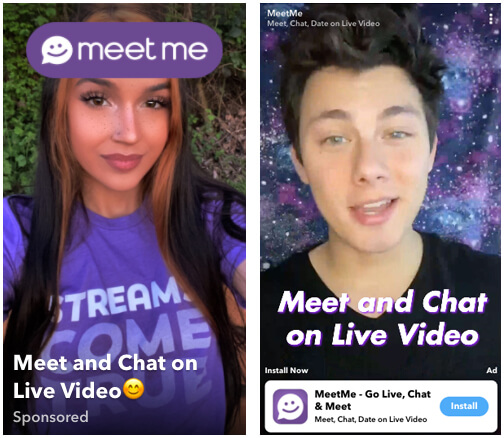Jade leads performance marketing for The Meet Group’s portfolio of social apps, focusing on driving global new user growth for MeetMe, Skout, and Tagged. She began her career as a jack-of-all-trades marketer, managing brand, social media, event, and content marketing in the Bay Area startup world. Jade then pivoted to mobile marketing for Skout, and subsequently joined The Meet Group through company acquisition.
Learn more about Jade on her Mobile Hero profile.
In a world of skeptical consumers, ephemeral content, and ever-shrinking attention spans, how do you cut through the noise to reach new users of your product and build your brand? Enter user-generated content, or UGC.
UGC is effective in ad creative because consumers are more likely to trust other consumers over a brand. A Stackla survey found that 79% of people believe UGC highly impacts their purchasing decisions, and consumers are 2.4x more likely to say UGC is more authentic compared to branded content.
By tapping into content created by your own users, you can establish a steady flow of content that resonates with your target audience, promotes authenticity, and translates into high performing ads. Here are a few tips on how to leverage UGC in your ad creative strategy and take it to the next level.
Let your users tell their story – and YOUR story – for you.
Whether your marketing budget is large or small, brands often make the mistake of relying on stock imagery, or sourcing ad content from expensive third parties with no connection to your brand. Both of these approaches end up feeling inauthentic, and we’ve found that they are less effective for performance ads.

Liftoff helped run a series of A/B tests where we featured a photo of an actual MeetMe user (left) versus a stock image (right). The actual user outperformed the stock image in every test, with higher CTRs and lower CPAs.
Stock image sites or other third parties also make it difficult to keep up with the high volume of visuals needed for social and display ads, as you’re constantly trying to find new content that feels fresh.
UGC solves these issues by humanizing your marketing and handing over the reins of storytelling to your actual users. Outside of building trust, leveraging actual user content saves you time on content creation, expands your reach, and strengthens your relationship with your community.
Engage your community.
In order to encourage user-generated content, you need to first have a product that people are excited to talk about. Find your highly engaged and immersed users, and cultivate the relationship by reaching out and showing your appreciation – you can do this by simply sending free swag, setting up customer appreciation events, or including them in product feedback sessions to show you care about their opinions. This builds trust and makes users more inclined to work with you on your marketing efforts.
By featuring user-generated images and videos in our Snap Ads, we were able to scale paid registrations 4x while decreasing CPAs by 20%.

Source UGC from existing channels.
An easy way to start leveraging UGC is by repurposing user content with a testimonial as the CTA. If your users are sharing your brand content organically, then you’ve already got some content to work with. If not, you can put out a call for content through social media contests, giveaways, or by reaching out to users directly. In both cases, it is important that you nail down usage rights with your legal team first to avoid any copyright disputes.
Set guidelines from the start.
- Usage Rights Policy: Get help from your legal team to define ownership of the content, places where content can be used, and consent for multiple uses. This can be the most time-consuming part of the process, but it is worth establishing at the outset.
- Content Guidelines: Clearly communicate what you expect your users to share. Include examples to inspire them, and don’t be afraid to be specific. (For example: look friendly, smile, no profanity, no brand logos, no blurry or dimly lit pictures, etc.) This saves time in the long run, as you know the content will be on brand when submitted.
At The Meet Group, we have a core group of users for each app who regularly sends in content that we use to build high performing ads. This has allowed us to build a content library, streamline our ad content creation, and scale our performance spend by bringing down costs. Our metrics have improved across the board; we’ve seen higher click-through-rates, lower CPAs, higher retention, and higher ROI. The results are undeniable. How will you bring UGC into your creative strategy?
